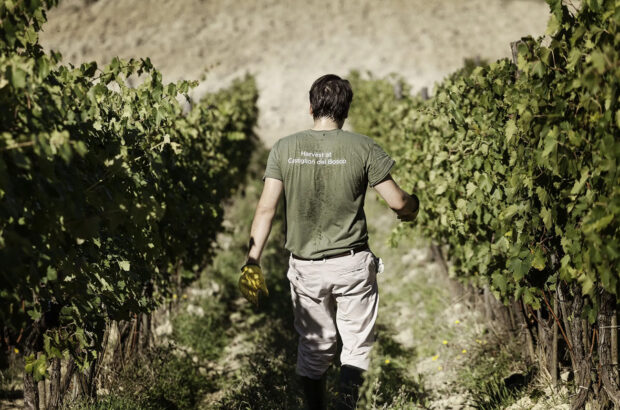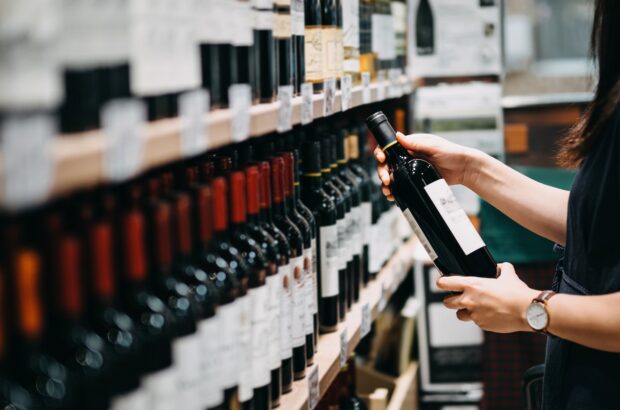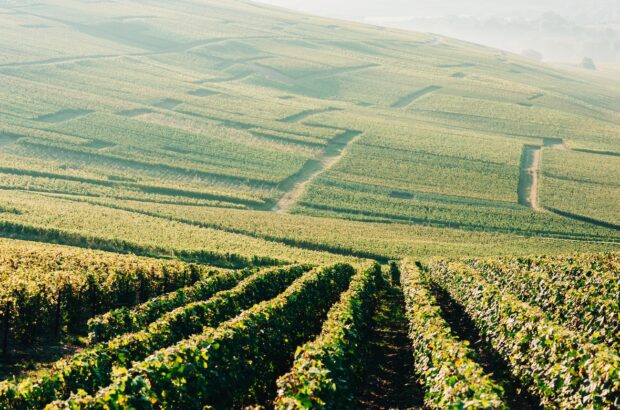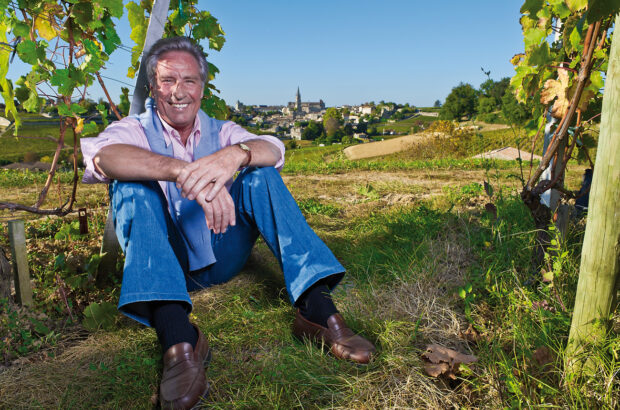In a sun-kissed valley of Oaxaca, southern Mexico, Luis Niño de Rivera pulls a machete from his pocket and starts to hack a large agave plant with intimidating precision. Cutting away the leaves, or pencas, he’s after the piña, the heart of the plant.
Once cooked, fermented and distilled, it will become mezcal, one of the most exciting, terroir-driven spirits in the world.
Historically, the Aztecs made alcoholic beverages from agave, extracting the sap to produce pulque – a milky, potent alcoholic drink. The Spanish brought distillation to Mexico in the 16th century, creating what we know as mezcal and entrenching agave’s cultural, medicinal and spiritual significance.
For centuries, mezcal was the drink of the poor. But a surge in demand from well-travelled consumers – thirsty for novelty and authenticity – has fuelled a plethora of small-batch mezcals. Some cost upwards of hundreds of pounds a bottle. Many are worth it.
Understanding agave
Well suited to the dry, arid plains and mountains of Mexico, there are more than 30 different varieties of agave that can produce mezcal. This gives it an incredible range of aroma and flavour profiles.
Of all the spirits, mezcal is the most like wine, in that the soil, variety, growing conditions and production method can all have a defining impact on the taste. Machete-wielding De Rivera (below), co-founder and co-CEO of Mezcal Amaras, describes it as ‘the soul of Mexico in a glass’.

Luis Niño de Rivera of Mezcal Amaras in an agave field CREDIT: Paul Caputo
Depending on the variety and terroir, agave can take anywhere between five and 30 years to flower – making some of them extremely rare. The Tobalá variety, for example, requires 25 years to reach maturity, and unlike most, cannot reproduce by itself. Cupreata, often found hugging cliffs at high altitudes in the state of Guerrero, needs up to 15 years.
Many agave plants grow wild, foraged from rugged terrain by those in the know – and produce only a few litres of spirit. Understandably, as a result certain mezcals have developed a cult following. Intimately connected to the land, they are every bit as collectible as single malts.
The plants used in most commercial mezcal production are cultivated and encouraged to flower after about eight years.That’s still significant, given the fickle nature of global markets; mismatches in supply and demand are predictably cyclical.
How is mezcal made?
The harvested piñas weigh up to 90kg. They are roasted, traditionally in large, conical pits dug into the earth and lined with hot stones, a process that can take several days. The smoky aromas of some mezcals are introduced during this stage. The choice of firewood matters, as various woods burn very differently. Oak is preferred; mesquite is used for a much smokier style.
Resembling a large pineapple, each piña is then crushed to extract the juice, often using a tahona, a large stone wheel pulled by a horse. The mosto (must), aided by wild yeasts, ferments in large wooden vats over several days or weeks. It is then typically double-distilled in copper or clay pot stills.

Maguey agave piñas before being cooked CREDIT: Bloomberg Creative Photos / Getty Images
Some producers opt for a third distillation, but De Rivera cautions that ‘the more times you distill, the more neutral the spirit becomes, losing aroma and flavour.’ Some producers compensate by adding a twist to the process; hanging raw chicken breast inside the still to infuse savoury notes is not uncommon – look for the term ‘pechuga’ on the label.
More important however, is the use of wood-fired, clay pot stills. These, together with traditional roasting and fermentation processes, define a mezcal as ancestral.
Is mezcal different from tequila?
Produced primarily in the state of Jalisco, tequila is produced from only one type of agave: Blue Weber. To be labelled ‘tequila’ at least 51% of the fermentable sugars in the spirit must be derived from Blue Weber agave. Mixto tequilas are made from agave mixed with cane or corn sugars; while 100% agave tequilas are made without added sugars.
Tequila is produced in several styles. These include blanco (white) or plata (silver), which are bottled directly after distillation. Joven (young) or oro (gold) are usually unaged tequilas blended with aged tequilas. Reposado (rested) are aged in oak barrels for a minimum of two months and maximum of 12 months. Añejo are aged between one and three years. While extra añejo must be aged for three years or more.

Agave roasting pit at Rancho Tanivet in Tlacolula de Matamoros, Oaxaca CREDIT: Paul Caputo
In contrast, 10 states are officially allowed to use the term mezcal, although the majority is made in Oaxaca. Mezcal is only produced from 100% agave. Each of the 30-plus varieties imparts its own distinct characteristics, either as single-varietal mezcals, or as part of a blend.
Most mezcals are released young (joven), but there are aged expressions too, largely an emulation of the tequila trade. Two key categories are reposado, matured in oak for between two and 12 months, and añejo, aged in wood for more than one year.
Sustainability
Mezcal aficionados are justifiably protective of the industry; concerns over its sustainability jar with year-on-year growth. Industrialisation may be inevitable, but there are lessons to learn from tequila’s rapid expansion.
Environmental concerns – such as deforestation, reduced biodiversity and the challenges of waste disposal – are hard to ignore. Water stress is also a key issue, particularly in the summer; It takes approximately 10 litres of water to make one litre of mezcal, depending on the variety of agave used.
There are accusations of cultural appropriation too, as international drinks companies compete with the ‘little guy’. Small producers, known as mezcaleros, often label their products as ‘agave distillate’, unable or unwilling to comply with the cost and complexity of regulation and bureaucracy that comes with the mezcal label.

Pouring mezcal CREDIT: Pedro Pardo / Getty Images
How to drink mezcal
In the UK, advocates for the spirit are starting to make some waves. A leading ambassador of mezcal culture can be found just off London’s Bond Street, at one-star Michelin restaurant KOL. Its Mezcaleria offers the largest selection in the country, as well as a range bottled under its own label. Head barista Ximena Perdigón, guides guests on how to consume the spirit. ‘Mezcal is a drink to be kissed. It is sipped slowly, and socially,’ she says.
Sipping mezcals are undeniably trendy, but the majority of consumption is within cocktails. Mezcal can be used instead of tequila in classic serves like the Margarita for example.
However Ivan Vasquez, whose Madre restaurants in Los Angeles boast the largest mezcal collection in the US, believes that pushing the spirit in cocktails is not sustainable. ‘We’re going to remove them from our menus. We don’t want to encourage more industrial mezcal,’ he says.
That’s easier said than done of course, but keeping the emphasis on integrity and authenticity is the right move. This is a world as fun, stimulating and complex as wine, with a following of dedicated fans.
Salud! Here’s to your first (or next) copita de mezcal.
Eight mezcals to try
Del Maguey Wild Tepextate Mezcal
A minimum of 18-year-old Tepextate agave, grown wild in the village of Santa Maria Albarradas in Oaxaca. Distilled in copper. Very fragrant, with notes of jasmine, lemon, pineapple and cinnamon. Alcohol 45%
Gente de Mezcal Espadín
Made from seven-year-old Espadín agave grown in San Baltazar Guelavila, Oaxaca. Produced by Aureliano Hernández, a fifth-generation mezcalero. Floral and fruity on the nose, leading to a spicy, caramel finish. Alc 48%
Lalocura Tobasiche
Labeled agave distillate. Tobasiche agave, grown in the village of Santa Catarina Minas, Oaxaca. Earthen pit roasted and double-distilled in clay pot stills. Made by Eduardo ‘Lalo’ Angeles, one of mezcal’s most internationally recognised artisans. Quite floral, with notes of pine and vanilla. Herbal on the finish, with a touch of salinity. Alc 49%
La Medida Bicuishe Mezcal
La Medida sources rare agaves from over 40 different producers to create a range of mezcals. This Bicuishe agave has tropical fruit notes, notably papaya and pineapple, with a nuttiness in the background. Grass, juniper and white pepper on the finish. Alc 47%
Los Siete Misterios Coyote Mezcal
Made from Coyote agave, showing fruity notes of strawberry, cherry, banana, mango and pear preserves. Subtle hints of liquorice, anise, mint and wet earth, while delicate nuances of chocolate, vanilla, and floral accents create a refined finish. Alc 49.5%
Mezcal Amarás Cupreata
Mezcal Amarás plants multiple new agave plants for each one it harvests. This mezcal comes from 13-year-old Cupreata agave, grown at high altitudes in the state of Guerrero. Distilled in copper. Attractive herbaceous aromas lead to a citrus and honey palate with a touch of jalapeño. Spicy finish. Alc 41%
Neta Barril
A single-batch mezcal, that’s labelled ‘agave distillate’. Made from Barril agave, collected from the valleys of Miahuatlán, Oaxaca. Produced by Ramón Garcia and Wilfredo García using copper stills. Neta is slang for ‘the real deal’ or ‘the truth’; the brand works with various families and co-operatives to produce small-batch spirits. Alc 47.1%
The Lost Explorer Mezcal Tobalá
A 100% Tobalá agave from San Pablo Huixtepec in Oaxaca. Complex aroma profile with notes of grass, mint, wild herb, and lemon. Some vanilla and white pepper, with smoky cigar lingering in the background. Alc 42%







